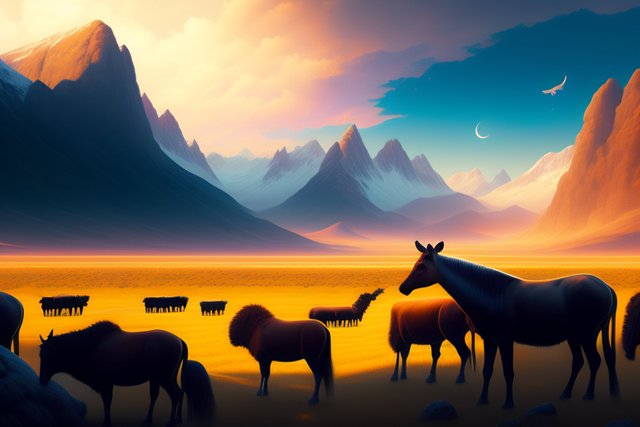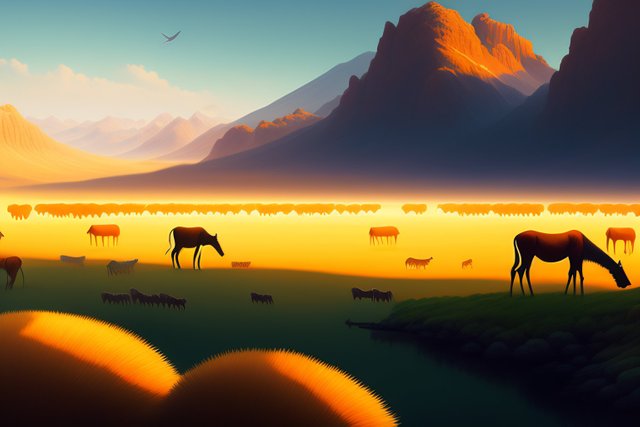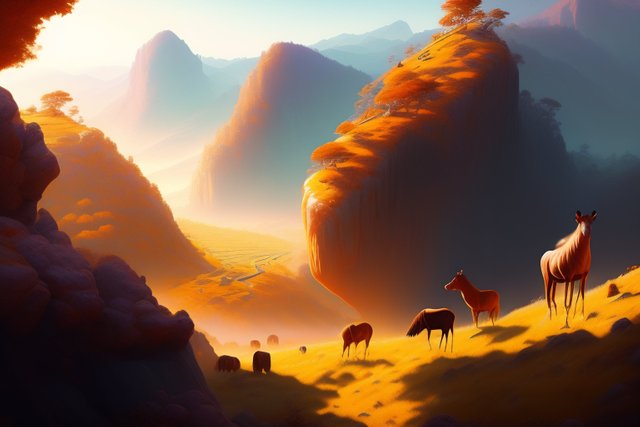
The animal kingdom is a vast and diverse realm of life on Earth, encompassing a wide range of species with unique characteristics and adaptations. From the microscopic to the gargantuan, from the depths of the ocean to the highest mountains, animals inhabit nearly every corner of our planet. In this comprehensive review, we will delve into the fascinating world of animals, exploring their evolution, classification, behavior, and ecological significance. By examining various animal groups and their remarkable traits, we aim to gain a deeper understanding of the intricate web of life that surrounds us.
I. Evolution and Classification (150 words):
The animal kingdom traces its origins back to more than 600 million years ago, with the emergence of multicellular, eukaryotic organisms. These early animals, such as sponges and cnidarians, laid the foundation for the incredible diversity we see today. Over time, animals diversified into numerous phyla, classes, and orders based on their anatomical, genetic, and behavioral characteristics.
.jpg)
One of the key advancements in animal evolution was the development of bilateral symmetry, a body plan that allowed for efficient movement and more complex sensory structures. This led to the emergence of diverse phyla, including arthropods (insects, spiders, crustaceans), chordates (vertebrates and their relatives), mollusks (snails, clams, octopuses), and more.
II. Diversity of Animal Life (250 words):
The animal kingdom encompasses an astonishing array of life forms. Insects, the most numerous animal group, boast incredible diversity in terms of species and ecological roles. From the industrious ants to the iridescent butterflies, insects play crucial roles in pollination, decomposition, and ecosystem dynamics.
Mammals, a subgroup of vertebrates, exhibit remarkable adaptations, ranging from the airborne mastery of bats to the aquatic prowess of dolphins. Birds, with their feathers and unique reproductive systems, have conquered the skies and diverse habitats around the world.
In the oceans, marine life is equally astounding. From microscopic plankton to colossal whales, the ocean harbors a complex food web. Coral reefs, built by tiny polyps, support a multitude of marine species, making them one of the most biodiverse ecosystems on Earth.
III. Animal Behavior (200 words):
Animal behavior is a rich and diverse field of study, revealing intricate patterns of adaptation and communication. Social insects like ants and bees demonstrate sophisticated division of labor and communication through pheromones. Wolves and lions engage in cooperative hunting, while the solitary leopard relies on stealth and ambush.
Animal communication takes many forms, from the haunting songs of humpback whales to the intricate dances of bees to convey the location of nectar sources. Birds use vibrant plumage and elaborate songs for mate attraction and territory defense. Dolphins employ clicks and whistles for echolocation and social interactions.
Animal migration is another fascinating behavior. Monarch butterflies undertake a remarkable journey from North America to Mexico, while wildebeests migrate across the Serengeti in search of fresh grazing lands. These migrations are often driven by seasonal changes and the quest for resources.
IV. Ecological Significance (200 words):
Animals play vital roles in ecosystems as pollinators, predators, prey, and decomposers. Bees, for instance, pollinate countless plant species, including many of our agricultural crops. Predators help maintain the balance of prey populations, preventing overgrazing or overpopulation.
In aquatic ecosystems, coral reefs provide habitats for numerous species, protecting coastlines from erosion and supporting fisheries. Additionally, the excretion of waste products by animals helps recycle nutrients in ecosystems, facilitating the growth of plants and algae.
Furthermore, animals are indicators of environmental health. Their presence or absence can signify changes in habitat quality and the impacts of pollution or habitat destruction. Conservation efforts often focus on protecting endangered species and their habitats to preserve biodiversity and ecosystem stability.
.jpg)
Conclusion :
The animal kingdom is a testament to the wonders of life on Earth. From the tiniest microorganisms to the largest mammals, animals have evolved to thrive in diverse environments, showcasing remarkable adaptations and behaviors. Their ecological significance cannot be overstated, as they shape ecosystems, support agriculture, and serve as indicators of environmental health. As stewards of our planet, it is our responsibility to understand, appreciate, and protect the incredible diversity of life that constitutes the animal kingdom, ensuring a harmonious coexistence for generations to come.